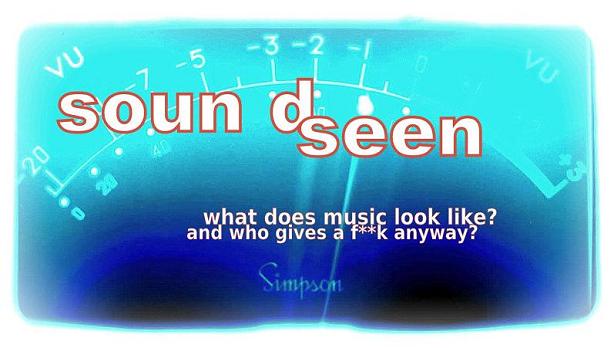What the hell?
The first time i saw this image i thought
it was a put-on, or maybe a one-off?
But no- i had just wandered into...
The first time i saw this image i thought
it was a put-on, or maybe a one-off?
But no- i had just wandered into...
Highway Hi-Fi was created by Dr. Peter C. Goldmark.
The idea came from his young son, who asked him
why the only thing to listen to in the car was boring,
lame-ass radio (i'm paraphrasing).
The idea came from his young son, who asked him
why the only thing to listen to in the car was boring,
lame-ass radio (i'm paraphrasing).

Those who might be thinking this doctor was just some crank
should bear in mind he was head of CBS Labs and had
already invented the 33-1/3 rpm Long-Playing record format...
aka- the LP.
For the Highway Hi-Fi, he used what he'd learned doing
that to create a whole new format with a brand new groove.
Check it out...

that to create a whole new format with a brand new groove.
Check it out...

Notice how many RPMs? Weird or what?
Well, not so weird actually...
Revolving at 16 2/3 rpm, with almost three times the number
of grooves per inch as an LP, delivered 45 minutes of playing time
on a single side and a record small enough to fit with its mechanism
inside the glove compartment.
How big was the record?
7 inches across.
Well, not so weird actually...
Revolving at 16 2/3 rpm, with almost three times the number
of grooves per inch as an LP, delivered 45 minutes of playing time
on a single side and a record small enough to fit with its mechanism
inside the glove compartment.
How big was the record?
7 inches across.
Dr. Goldmark felt the format had possibilities beyond
the dashboard- that a 7 inch disc might become
a standard in the record business, especially if radio
stations began broadcasting pop music where songs
were shorter than classical pieces.
William S. Paley, head of CBS, did not agree.
He did not think there was any future in pop music...
or a device that might let people listen to something
besides CBS radio.
the dashboard- that a 7 inch disc might become
a standard in the record business, especially if radio
stations began broadcasting pop music where songs
were shorter than classical pieces.
William S. Paley, head of CBS, did not agree.
He did not think there was any future in pop music...
or a device that might let people listen to something
besides CBS radio.

The whole amazing story, along with all sorts
of other details and images, can be found
at the Imperial Club.
Later models got with the program -
eliminating
the 'discreet' format of 16.66 rpm discs in favour
of the ever-more-popular 7 inch 45rpm disc.
In the 1960 Mopar Accessories catalog, the RCA 45rpm unit
is part number 2096-594, designed to hold 2-1/2 hours
of music for a list price of only $39.55!

Alas, it was too late.., Highway Hi-Fi disappeared
from the options list forever in 1962.
But just two years later, the audio horizons would
open again, with the introduction of FM radio
and the audio cassette.
*
eliminating
the 'discreet' format of 16.66 rpm discs in favour
of the ever-more-popular 7 inch 45rpm disc.
In the 1960 Mopar Accessories catalog, the RCA 45rpm unit
is part number 2096-594, designed to hold 2-1/2 hours
of music for a list price of only $39.55!

Alas, it was too late.., Highway Hi-Fi disappeared
from the options list forever in 1962.
But just two years later, the audio horizons would
open again, with the introduction of FM radio
and the audio cassette.
*








No comments:
Post a Comment